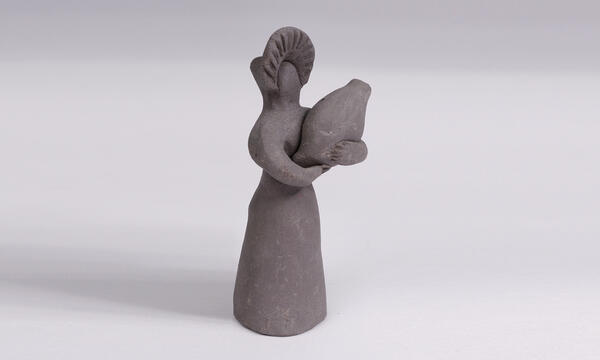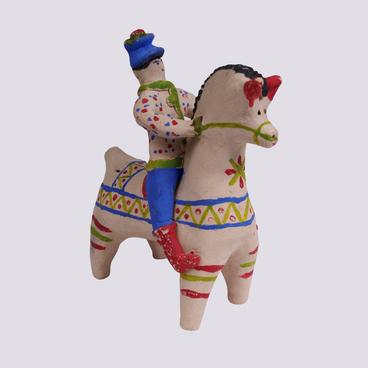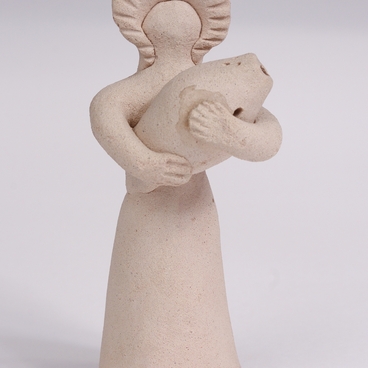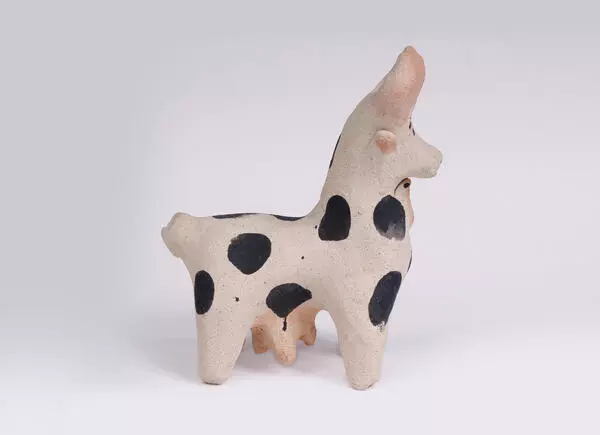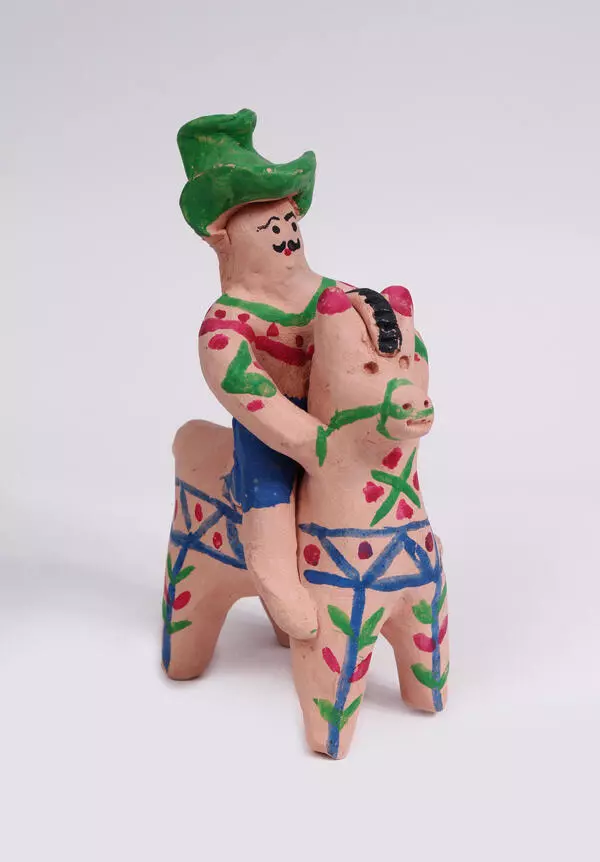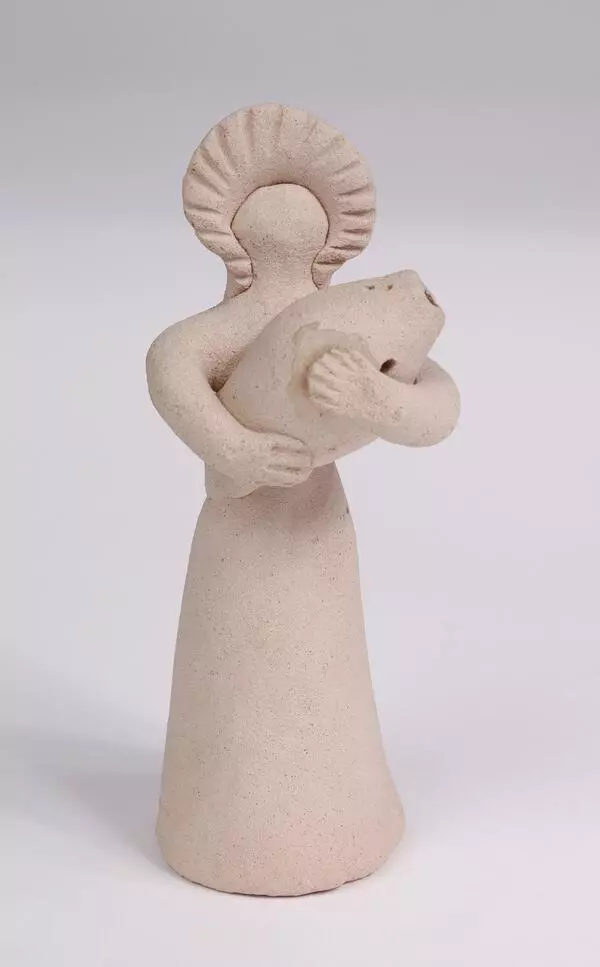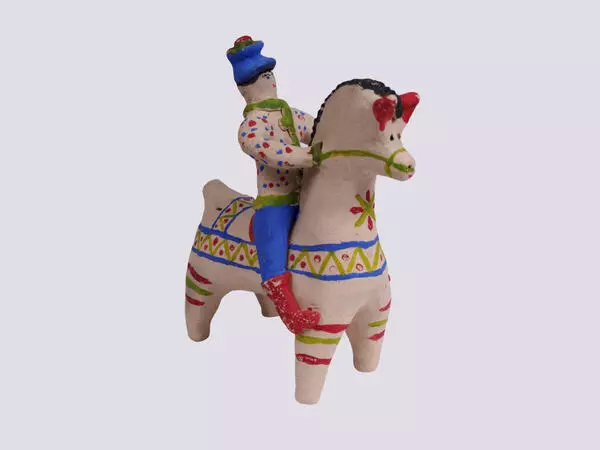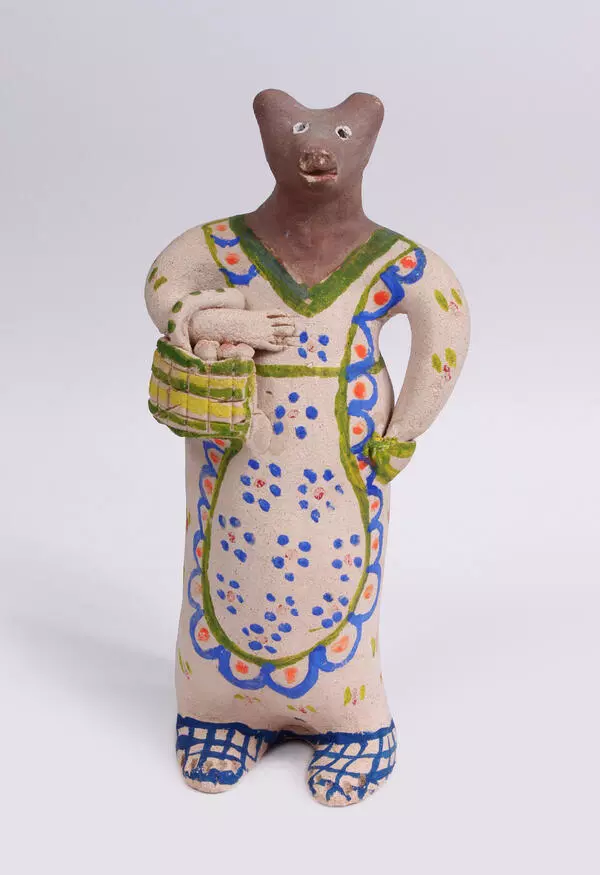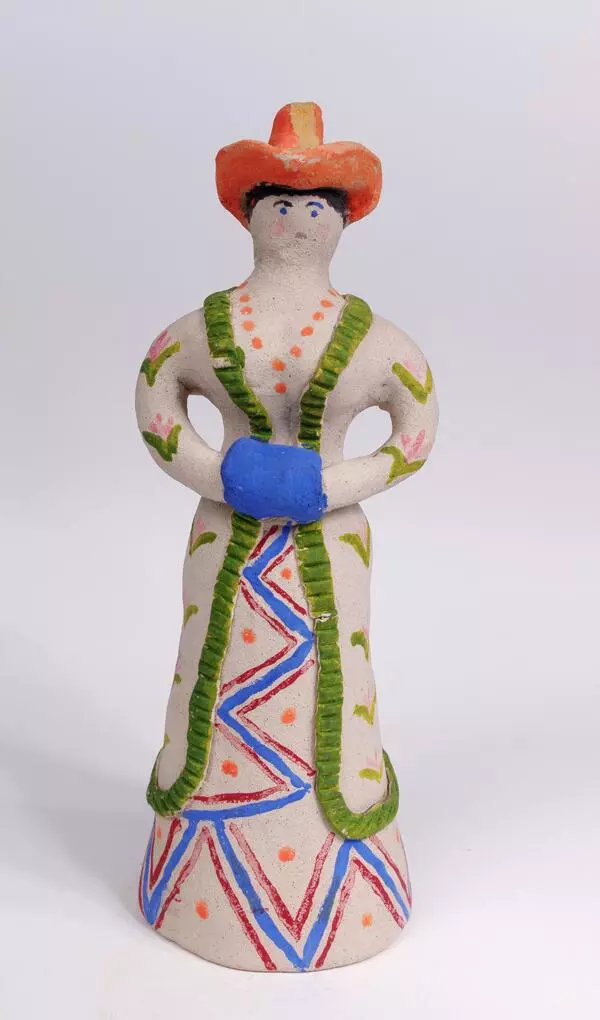This damsel figurine helps to understand one of the stages of the toy creation process. The Goncharova sisters sculpted it in the 1990s. The result is the so-called bone-dry item — the shape has already been created but the workpiece has not been fired yet.
While creating the workpiece, the craftswomen used a variety of different tools. For example, they took a rather thick stick with a cone at the end to make the inner part of the bell-shaped skirt. The height of the cone was 60–80 mm. The diameter of its thicker part was up to 20–30 mm, and of the smaller part was only 6–10 mm.
An hour and a half after the figurine was ready, the craftswomen pierced holes to make a whistle. People always used a stick with a flat end for this technique. The sisters Goncharova said that they did not remember whether this instrument had a special name or not. They used a slightly sharpened match, which was up to about 1–1.5 mm in diameter. That is why they called this instrument ‘match’. In other Russian crafts, such sticks were often called ‘pischik’. Tatyana Bryzhik, who carried out the research of the Stary Oskol toy, called the piercing instrument ‘shpykachka’.
After the molding and piercing, the workpiece had to dry. Then it was put into a special kiln that could be heated up to very high temperatures. The artisans strictly followed the heating mode. The firing required a temperature of about 600-700 degrees. While in the kiln, the toys were heated so much that they began to glow. After firing, the items became more durable and changed their color.
Old kilns buried under the ground can still be found in the Cossack Sloboda (large village inhabited by free peasants) on Podgornaya Street, which miraculously preserved its original look and architectural appearance. One of the artisans of the 20th century, Nikolai Chernykh, recounted,
While creating the workpiece, the craftswomen used a variety of different tools. For example, they took a rather thick stick with a cone at the end to make the inner part of the bell-shaped skirt. The height of the cone was 60–80 mm. The diameter of its thicker part was up to 20–30 mm, and of the smaller part was only 6–10 mm.
An hour and a half after the figurine was ready, the craftswomen pierced holes to make a whistle. People always used a stick with a flat end for this technique. The sisters Goncharova said that they did not remember whether this instrument had a special name or not. They used a slightly sharpened match, which was up to about 1–1.5 mm in diameter. That is why they called this instrument ‘match’. In other Russian crafts, such sticks were often called ‘pischik’. Tatyana Bryzhik, who carried out the research of the Stary Oskol toy, called the piercing instrument ‘shpykachka’.
After the molding and piercing, the workpiece had to dry. Then it was put into a special kiln that could be heated up to very high temperatures. The artisans strictly followed the heating mode. The firing required a temperature of about 600-700 degrees. While in the kiln, the toys were heated so much that they began to glow. After firing, the items became more durable and changed their color.
Old kilns buried under the ground can still be found in the Cossack Sloboda (large village inhabited by free peasants) on Podgornaya Street, which miraculously preserved its original look and architectural appearance. One of the artisans of the 20th century, Nikolai Chernykh, recounted,
